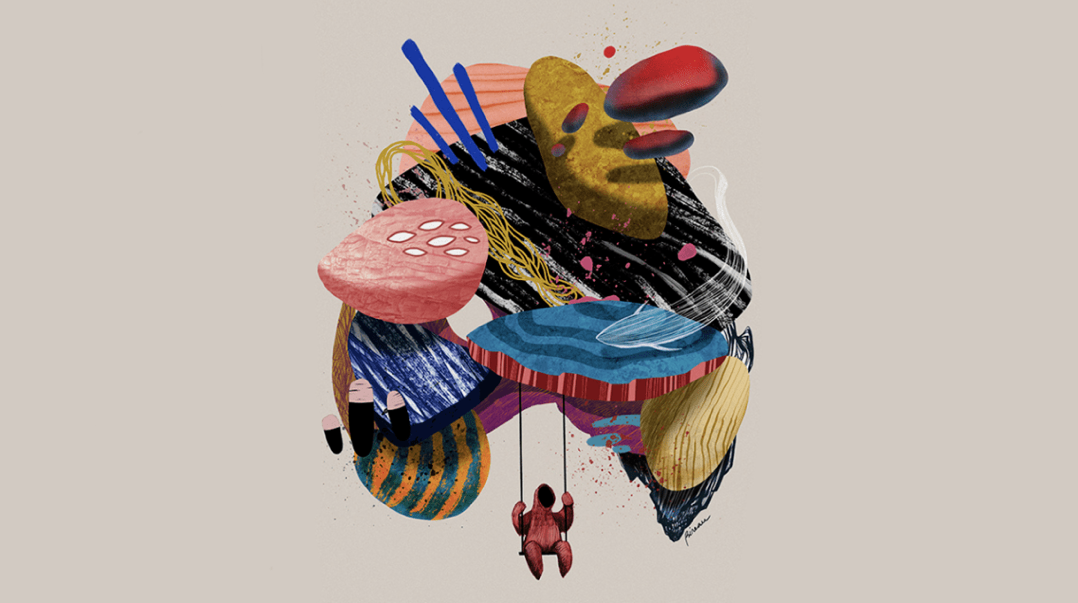Tackle the trauma of 2020 with childlike glee
The last year has been nothing short of a roller coaster ride where the fall just never seemed to end. We were all forced to battle isolation and loneliness due to a decrease in social interaction, and deprivation of several forms of human connection such as friends, family members and workplace banter with colleagues. Covid-19 may not have infected every individual, but it affected everyone’s mental and/or physical health to some degree. It caused a disruption in the schedules that we all had learned and followed for years, which led to difficulties with concentration, motivation, and recuperation. Unprecedented times like these call for unconventional methods to combat them too! During this pandemic, we learned to keep our priorities simple and straight, albeit the hard way. The only way to ensure survival was to accept the situation and adapt to its unique needs. Imagination is a very important component of adaptability. It finds creative channels of expression when words may fail us, it helps us make sense of events and how we process complex feelings, and also find relief. Imagination helps us find novel solutions when problems seem insurmountable.
Why does imagination make solutions possible? Because it makes it easier for us to shift our perspectives. Take the resistance to the lockdown this year. The people who were quicker in being able to cope with such a drastic change in their routines were the ones who did not resist the change. They were able to envision a possibility of their work/career/family life/social life thriving in a completely new setting. Imagination allows us to shed the certainty that a pre-existing framework gives us and create “new normal”s without the crippling fear of impending doom. The people who struggled the most this past year were also those who were unable to let go of the now-unviable routine they had always followed.
So how do we use our imagination to now move forward into 2021? While we might feel like we got through the worst bit of the pandemic, we need to be able to manage our expectations and desires to default back into “life as we knew it” before the pandemic. We need to understand that we can only move forwards, and that perhaps, in a lot of ways, there won’t be any “going back” for a lot of us. We need to start accepting that our definitions of “Normal” need to change. The word normal comes from “norm” which simply means ‘what is practiced or observed in majority’. Therefore, we need to question what we consider normal and what we consider abnormal. Going out for dinners, movies, shopping, and even smaller things like watching the sun set at the beach is going to change completely for the foreseeable future.
What can we do to aid our imagination? The easiest approach is through creativity. Studies show that creating art stimulates the release of dopamine. This chemical is released when we do something pleasurable, and it makes us feel happier. And the best part is that art is so versatile and subjective, that everyone can participate and enjoy their own version of art. You don’t need to be an artist to engage with your creativity, it pervades through your existence in many ways. For example, music. Whether it is listening to your favourite music, discovering new sounds, singing, playing an instrument or even dancing when no one is watching- music can contribute to uplifting your mood. Research suggests that people listen to music to regulate arousal and mood, and to achieve self-awareness. This means that music is not only able to affect your mood, but that listening to particularly happy or sad music can even change the way we perceive the world. Moving along to music even for five minutes can boost happiness, regulate cortisol levels in our body (the stress hormone) and improve creative-thinking patterns. One doesn’t have to be a dancer or singer to engage with music that makes them happy, and enjoy themselves.
Journaling is another way to channel your creativity. Journals are extremely versatile and can transform into whatever you intend them to be. You can use journaling as a way to keep track of your habits, moods, emotional triggers, or even to just channel your daily thoughts. You can also use a journal as a medium of self expression through art, song lyrics, newspaper cuttings, pressed plants, stickers, and more! Journaling may also help you plan out your day more visually and have all your errands, chores, meetings, and to-do lists in one place so that it’s simpler to allot time for each task. It can also help you take stock of your daily life, in order to filter out what may no longer serve you, and fill in your life with things that give you joy.
There is no end to the kind of things you can do to engage with your creative self, like gardening, immersing yourself in stories through literature and cinema, cooking, learning new crafts, and playing games like Sudoku, Jenga, Scrabble, Pictionary, or even Chess! As this year ends, and we wait for the new year to bring us better news, let’s engage with our creativity and imagination to work through our problems more effectively.







